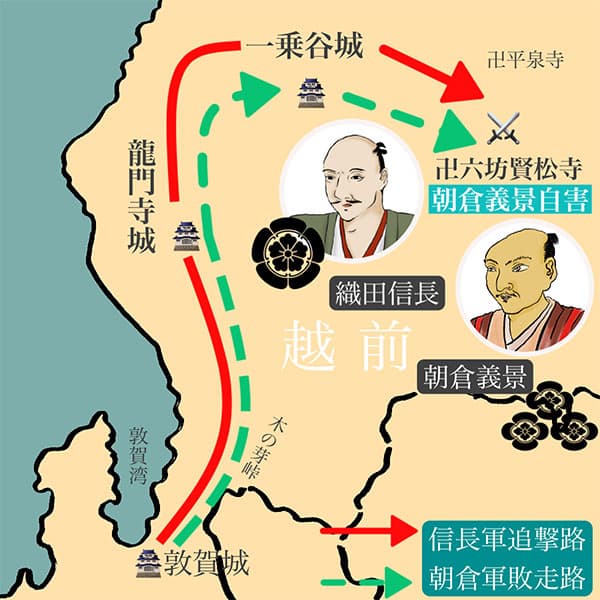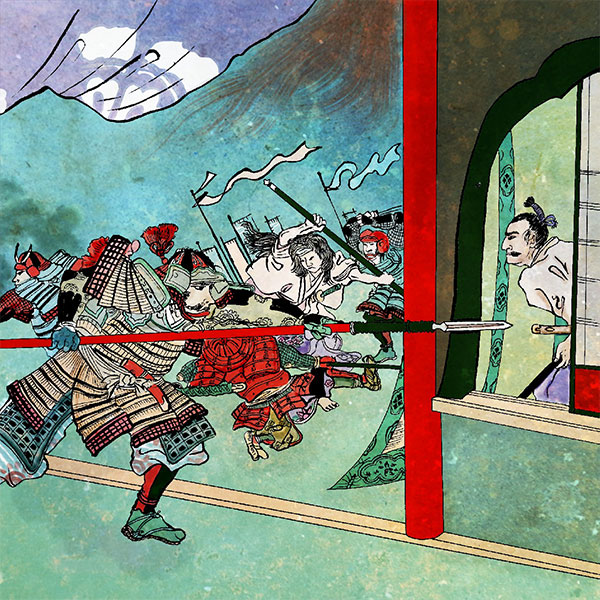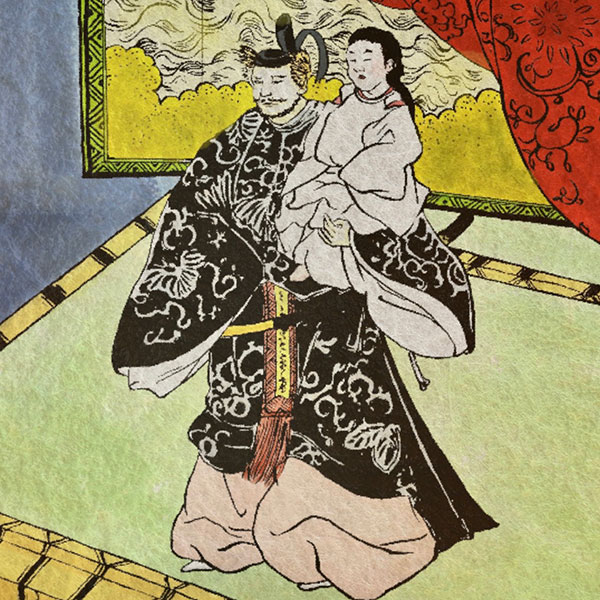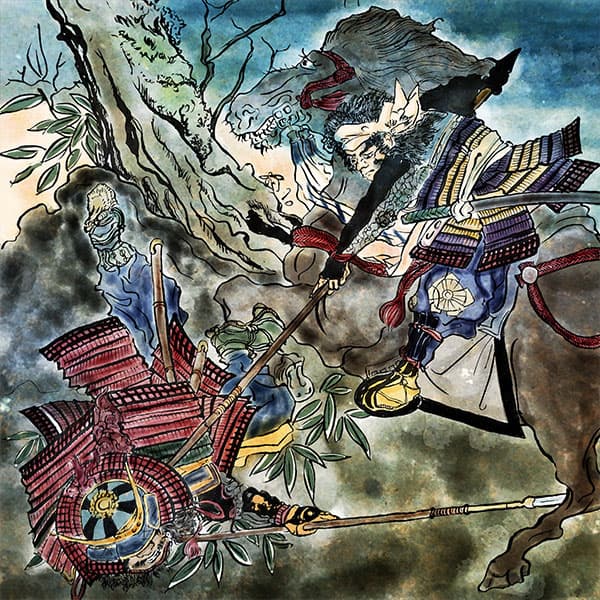Katsuie Shibata (1/2)One of the few senior retainers from the time of Oda Nobuhide
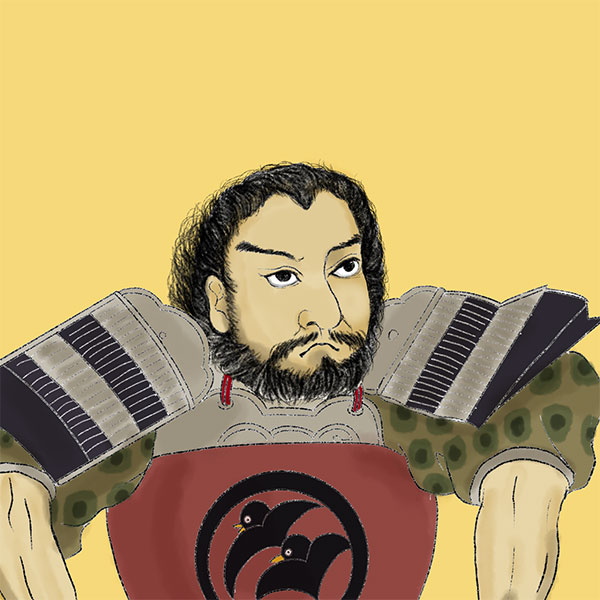
Katsuie Shibata
- Article category
- biography
- name
- Shibata Katsuie (1522-1583)
- place of birth
- Aichi prefecture
- Related castles, temples and shrines

Fukui Castle
During the Sengoku period, Oda Nobunaga rose rapidly from a simple warlord who controlled part of Owari Province to a position where he could aim for dominance over the whole country. As his territory expanded, he employed many capable vassals, but there were also a few vassals who had supported the Oda clan since the time of his father, Nobuhide. A prime example of this was Shibata Katsuie. At first, he tried to support Nobunaga's younger brother, Nobukatsu (or Nobuyuki), but later submitted to Nobunaga and achieved great success as a senior retainer. This time, we will introduce his life.
From birth to becoming a retainer of Nobukatsu
He was born in Kamishiro Village, Aichi County, Owari Province (present-day Meito Ward, Nagoya City, Aichi Prefecture) in 1522. However, there are several theories about his birth year, including 152 or 1527, so it is not clear.
His origins are unknown, but he is said to be the son of Katsuyoshi Shibata, but there are no reliable documents remaining. It is speculated that he was probably from a family of local lords.
From a young age, he served as a vassal of Nobunaga's father, Oda Nobuhide, and governed Shimoyashiro Village, Aichi County, Owari Province. By the time Oda Nobunaga inherited the family headship, he had become a key figure in the Oda clan. In 1551, when Nobuhide died, he served Nobunaga's younger brother, Oda Nobukatsu (Nobuyuki), as a chief retainer.
In 1552, during a battle with Oda Nobutomo, lord of Kiyosu Castle and deputy governor of the four lower counties of Owari, he killed the enemy elder retainer Sakai Jinsuke together with Nakajo Ietada, and the following year he led the charge as a general in the siege of Kiyosu Castle, achieving military success by killing 30 soldiers (Battle of Kayazu).
Katsuie plotted with Hayashi Hidetada to make Nobukatsu Nobuhide's successor, and attempted to eliminate Nobukatsu's older brother, Oda Nobunaga. In August 1556 (the 2nd year of the Koji era), Katsuie led 1,000 men into battle, but was defeated and surrendered (Battle of Inagi).
On this occasion, Nobunaga and Nobukatsu were pardoned at the strong request of their birth mother, Lady Tsuchida, and it is said that Nobunaga, Katsuie, and Tsuzuki Kuranosuke went to Kiyosu Castle in black robes and, together with Lady Tsuchida, expressed their gratitude to Nobunaga (The Chronicles of Nobunaga, Volume 1).
From then on, he acknowledged Nobunaga's abilities, but after the defeat at Inoue, Nobukatsu began to favor the newcomer Tsuzuki Kuranosuke and look down on Katsuie, which led him to abandon Nobukatsu. In 1557, the third year of the Koji era, when Nobukatsu once again plotted a rebellion to eliminate Nobunaga, he informed Nobunaga in advance, and Nobunaga pretended to be ill, luring Nobukatsu to Kiyosu Castle on November 2nd to visit him, where he was killed by Kawajiri Hidetaka and others. By order of Nobunaga, Katsuie was to raise Nobukatsu's surviving child, Tsuda Nobuzumi.
From Oda Nobunaga's retainer to the destruction of Azai and Asakura
After Nobukatsu's death, he was pardoned and became a vassal of Nobunaga, but perhaps because he initially sided with Nobukatsu and rebelled against Nobunaga, he was not allowed to play an active role in Nobunaga's battle to unify Owari, the Battle of Okehazama, or the attack on the Saito clan of Mino.
Nevertheless, a document of confirmation of his territory, sent to Jakkoin in Owari Province and estimated to be dated July 15, 1565 (Eiroku 8), was signed by him along with Niwa Nagahide and Sassa Munetomo (a member of Narimasa's family), and it is believed that he was one of Nobunaga's magistrates at that time.
In 1568, when the campaign to ascend to Kyoto began, they were once again put to important use, and they participated in the battles to pacify the Kinai region as one of the four vanguard generals of the Oda army (such as the Battle of Shoryuji Castle), achieving military success as Nobunaga's most elite. Until November, the four opposing generals were in charge of military affairs in Kyoto, but they left it to the Shogunate's servants and retreated to Gifu with Nobunaga.
In January 1569, he returned to Kyoto with Nobunaga during the Honkokuji Incident by the Miyoshi Triumvirate, and served in charge of the administration of Kyoto and the Kinai region until early April. In August of the same year, he took part in the battle against the Kitabatake clan, who controlled the five southern Ise counties.
In April 1570, Azai Nagamasa defected from Nobunaga, and in May Rokkaku Yoshikata re-advanced the southern shore of Lake Biwa, cutting off the road to Gifu. Nobunaga decided to assign six military commanders to each castle to secure the southern shore, with four being placed in Konan at first. Katsuie was assigned to Chokoji Castle, and later that month he fought the Rokkaku forces, but repelled them together with Sakuma Nobumori, Mori Kanenari, and Nakagawa Shigemasa. In June, he took part in the Battle of Anegawa against Azai and Asakura.
In the Battle of Noda Castle and Fukushima Castle from August to September of the same year, the Miyoshi Triumvirate marched up from Shikoku to confront the combined forces, while Ishiyama Hongan-ji Temple suddenly became hostile, resulting in a melee. In the latter half of the battle, the Asakura-Azai allied forces, with a force of 30,000, burned Yamashina and Daigo, and advanced toward the Shogun Palace in Kyoto. In December, Nobunaga asked Ashikaga Yoshiaki to mediate and bring about a peace agreement with Azai and Asakura through the Imperial Court.
In February 1573, when Shogun Yoshiaki, who was in conflict with Nobunaga, sent troops into the forts of Ishiyama and Imakatta, four warlords, including Katsuie, attacked and took them (Battle of Ishiyama Castle and Imakatta Castle). Nobunaga held the Shogun in high regard and promoted peace negotiations with Yoshiaki, but the talks collapsed just before they were concluded due to interference from Matsunaga Hisahide.
In July, Yoshiaki barricaded himself in Makishima Castle, while his aide, Mibuchi Fujihide, barricaded himself in the Nijo Palace, but Katsuie persuaded Fujihide to surrender the palace.
Afterwards, Katsuie, with an army of 70,000 including his own, launched an all-out attack on Makishima Castle, where Yoshiaki was holed up, forcing him to surrender. Yoshiaki was exiled and the Muromachi Shogunate was effectively destroyed, but when Yoshiaki, protected by Mori Terumoto and other members of the Mori clan, encircled Nobunaga, he became a powerful general in the Oda army and fought in various places, including Omi Province and Settsu Province.
In August 1573, he defeated the Asakura clan in the Battle of Ichijodani Castle, and later participated in the Battle of Odani Castle in northern Omi. The vanguard at that time was Hashiba Hideyoshi.
The Attack on Echizen and the Honnoji Incident
After the downfall of the Asakura clan, Nobunaga appointed Maenami Yoshitsugu, a former Asakura retainer, as the guardian of Echizen Province, but another former Asakura retainer, Tomita Nagashige, rebelled against this and started a peasant uprising to kill Maenami. However, due to Tomita's subsequent attitude, the rebels broke off ties with him and invited Shichiri Yorichika, the leader of the Ikko Ikki in Kaga Province, to start a new Ikko Ikki and attack Tomita. In the midst of the turmoil, Tomita was shot dead by his retainers, and Echizen became a province plagued by violent uprisings.
Nobunaga led his entire army to battle and crushed the Ikko Ikki in an annihilation battle. In September, Nobunaga awarded Katsuie eight counties in Echizen Province, 490,000 koku of rice, and Kitanosho Castle (present-day Fukui City).
In 1576, Katsuie was appointed commander of the Hokuriku Army, and was tasked with subjugating Kaga Province, which had been the scene of rebellions for 90 years, with Maeda Toshiie, Sassa Narimasa, and Fuwa Mitsuharu as his yoriki (police officers). His previous territory of Gamo County in Omi Province and his castle, Chokoji Castle, were confiscated, and Gamo Masahide and Nagata Kagehiro were removed from their yoriki positions.
In July 1577, Uesugi Kenshin of Echigo Province advanced into Kaga Province. During this time, Katsuie clashed with Hashiba Hideyoshi at a military council, leading to a falling out. Hideyoshi then withdrew from the battlefield without permission from Nobunaga, leading to a breakdown in unity and the Lee Incident.
Katsuie headed to the rescue of Nanao Castle, but was too late and the castle fell, so he retreated while setting fire to surrounding bases. While he was retreating, on September 23rd, he was attacked by the Uesugi forces at the Tedori River (Battle of the Tedori River). The story that over 1,000 men on Katsuie's side were killed is only mentioned in Kenshin's letter, but there is no mention of it in other historical documents, so it is thought to have been a minor battle and is unknown. Then, when Kenshin died in 1578, Saito Toshiharu, a commander in Oda Nobutada's army, drove the Uesugi forces out of central Etchu.
In March 1580, as soon as a peace treaty was concluded between Nobunaga and the Hongan-ji Temple, activity in the Hokuriku region increased, and Katsuie attacked and destroyed Kanazawa Mido, the headquarters of the Ikko Ikki, and advanced his army to the border of northern Kaga and Etchu. After suppressing the Ikko Ikki, he finally pacified Kaga in November 1580. He continued this momentum and advanced into Noto Province and Etchu Province. Furthermore, with the downfall of Sakuma Nobumori, he became the head retainer of the Oda clan in both name and reality.
On February 28th of the following year, 1581, he took part in Nobunaga's horse parade in Kyoto, leading the Echizen group including his retainer, Maeda Toshiie.
Starting in March 1582, they laid siege to Uozu Castle and Matsukura Castle (Uozu City, Toyama Prefecture) in Etchu Province, which were on the side of the Uesugi clan, but on the early morning of June 2nd, the Honnoji Incident occurred, resulting in Nobunaga's violent death. Without anyone knowing this, Uozu Castle fell on June 3rd (Battle of Uozu Castle).
Upon learning of the incident, he immediately withdrew all his troops on the night of the 6th and returned to Kitanosho Castle, and in a letter to Mizoguchi Hanzaemon dated June 10th, Katsuie conveyed his understanding that Mitsuhide was stationed in Omi, and his plan to cooperate with Niwa Nagahide, who was in Osaka, to defeat Mitsuhide. However, the Uesugi side learned of the incident and encouraged the local lords of Etchu and Noto to regain their lost territories, preventing Katsuie from taking action, and by the time he finally set out for Omi on the 18th, Hideyoshi's forces, having made a great retreat from the Chugoku region, had already defeated Mitsuhide in the Battle of Yamazaki.
Kiyosu Conference
At the Kiyosu Conference held after the Honnoji Incident to decide on Nobunaga's successor, Hideyoshi supported Nobunaga's third son, Oda Nobutaka, in order to oppose Hideyoshi in the matter of the succession of the Oda clan. However, Hideyoshi, who had a strong track record and influence due to his defeat of Akechi Mitsuhide, supported Nobunaga's eldest grandson, Sanposhi (later Oda Hidenobu), and it was Sanposhi who inherited the headship of the Oda clan.

- WriterTomoyo Hazuki(Writer)I have loved history and geography since my student days, and have enjoyed visiting historical sites, temples and shrines, and researching ancient documents. He is especially strong in medieval Japanese history and European history in world history, and has read a wide range of things, including primary sources and historical entertainment novels. There are so many favorite military commanders and castles that I can't name them, but I especially like Hisashi Matsunaga and Mitsuhide Akechi, and when it comes to castles, I like Hikone Castle and Fushimi Castle. Once you start talking about the lives of warlords and the history of castles, there's a side of you that can't stop talking about them.


